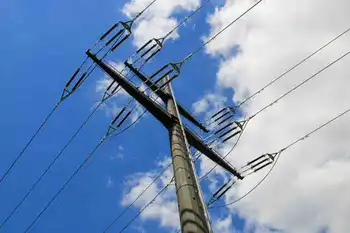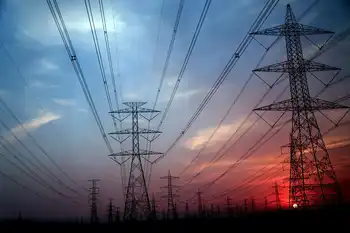National Grid continues local weather station installations
- Winter storms are just around the corner and National Grid, in collaboration with Earth Networks, is continuing the installation of WeatherBug monitoring stations in several Rhode Island locations to improve access to local weather conditions.
The real-time weather monitoring systems will help local emergency management officials, first responders, public works departments and National Grid to better prepare for, and respond more efficiently to, extreme weather incidents that can impact local communities and cause power outages. Now Roger Williams University in Bristol, Rhode Island has joined the list of locations.
“More and more, severe weather has become part of our lives,” said Timothy F. Horan, President of National Grid in Rhode Island. “The real-time data these WeatherBug stations provide is essential to assist state and local officials and National Grid in getting information needed to better predict, monitor and respond to severe weather.”
In addition to the Roger Williams University location, National Grid has now installed new WeatherBug stations in Coventry, Exeter, Hopkinton and plans to soon install a WeatherBug station in Little Compton. Two additional Rhode Island stations are pending in other locations. In all, National Grid plans to install more than 50 WeatherBug stations in its Rhode Island, Massachusetts and New York service territories.
“Closely monitoring upcoming and current weather data is critical for maintaining a safe campus, whether we’re anticipating a flood risk, icy roads or other storm conditions,” says John Tameo, director of facilities management at Roger Williams. “Typically, we rely on weather reports from a few cities away – with the WeatherBug station, we can now evaluate conditions specific to our area and in real-time. Key information on winds, temperature and more allows us to better prepare for storms and anticipate cleanup efforts. The WeatherBug has only been installed for a few months, but it’s already proven to be a great tool for helping us stay on top of weather situations.”
Installed WeatherBug stations measure local conditions such as temperature, wind speed and direction, precipitation, humidity and heat index in real time. National Grid will receive the information gathered by these weather stations as well as weather forecasts from Earth Networks and will incorporate this data into the predictive storm damage model that has been developed by National Grid in collaboration with MIT.
The predictive storm damage model is a “learning” model. This means that with each storm event’s data, the forecasting model will adjust its assumptions to more accurately predict the impact of future weather events to National Grid’s infrastructure. The company is then able to position personnel and equipment in those locations before the storms hit allowing for more rapid service restoration.
“Real-time data from neighborhood-level weather sensors provides communities with critical information on live conditions -- from severe thunderstorms and extreme heat in the summer, to snow and ice in the winter -- to help first responders, school officials, and utilities better prepare and respond efficiently and effectively,” says Dennis Stewart, Energy Solutions, Earth Networks - WeatherBug. “We are happy to support National Grid in its initiative in bringing hyper-local weather data to communities throughout Rhode Island, New York and Massachusetts.”
WeatherBug data from installed stations is available to the public online: Coventry, Exeter, Hopkinton and Roger Williams University and through mobile solutions iOS and Android apps.
National Grid is an electricity and gas company that connects consumers to energy sources through its networks.
Related News

Hydro One deal to buy Avista receives U.S. antitrust clearance
TORONTO - Hydro One Ltd. says it has received antitrust clearance in the United States for its deal to acquire U.S. energy company Avista Corp.
The Ontario-based utility says the 30-day waiting period under the Hart-Scott-Rodino Antitrust Improvements Act expired Thursday night.
Hydro One announced the friendly deal to acquire Avista last summer in an agreement that valued the company at $6.7 billion.
The deal still requires several other approvals, including those from utility commissions in Washington, Idaho, Oregon, Montana and Alaska.
#google#
The U.S. Federal Communications Commission must also sign off on the transaction and clearance is required by the Committee on Foreign Investment…




